“Art would be useless if the world were perfect, as man wouldn’t look for harmony but would simply live in it. Art is born out of an ill-designed world.” The great filmmaker, Andrei Tarkovsky’s timeless words reflect the evermore present role of art. As the world spirals further into distress and uncertainty due to the COVID-19 pandemic, art is found in the search for peace. Though temporary, one can find solace in comfort art: films, literature, music, and artwork that provide an often nostalgic escape departing from overwhelming current events.
Although socio-political art is crucial for both individual and societal progression, personal wellbeing calls for a balance in the consumption of art that tackles pressing issues and art for the purpose of enjoyment. Art as a means of healthy escapism consciously shifts focus from uncontrollable stressors to peaceful distractions—not to ignore one’s problems, but to aid in coping with them. Stepping away from persistent stressors through escapism allows for some space to gain perspective, if not just a mental break.
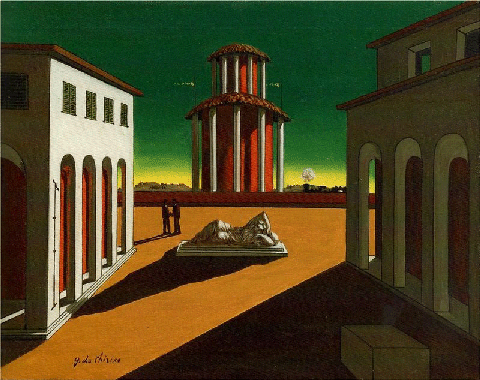
Historically rooted in folklore, mythology, and religious art, fantasy art—or fantastic art— taps into the value of story and its immersive qualities. Although fantasy is largely overlooked as a significant art movement, the genre is the embodiment of imagination, creating bizarre visual narratives that often serve as an expression of reality.
The work of German fantasy artist Michael Hutter strikes a balance between surrealism and storybook illustrations. Using traditional techniques, Hutter brings to life visions of magical folkloric horror with enough detail to carry the eye around a single piece for hours. Dipped in red and soaked in imagination, Hutter’s fantasy brings viewers to another time and place like no other. His works disregard realism in favor of creativity, presenting purely escapist art: “I don’t care about reality or the probability that something is true, only for its potential to stimulate my imagination.”
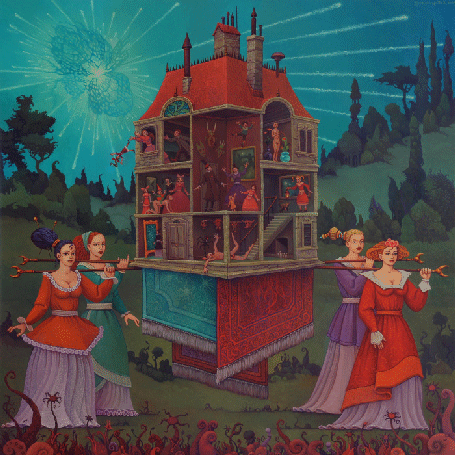
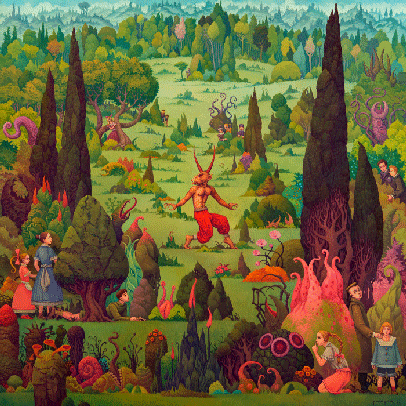
The recognizable East Asian landscape paintings, or “Mountain and Water” paintings as it is called in Japan and China, translate the healing qualities of nature to art. Though occasionally holding socio-political objectives, at the core of East Asian Landscape paintings is the Daoism philosophy which speaks of harmony in nature. Such paintings depict people not as having power over the land but being a natural element of it, equal to the trees, mountains, and rivers that surround them. The meditative landscapes return people to nature, inviting its viewers to explore the idealized scenery and escape within it.
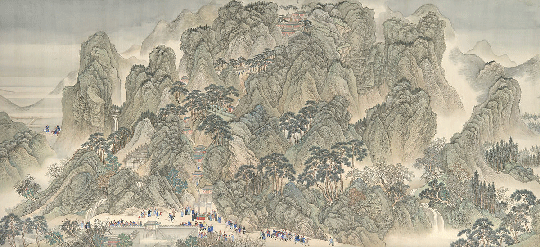
Japanese artist Fuco Ueda pulls the serenity of landscape art underwater. The artists’ dreamy paintings depict ethereal female figures mingling with aquatic life. Draped in melancholy, Ueda’s surreal work brings a weightlessness to the heavy reality of everyday life by tapping into the escapist qualities of both fantasy and nature.
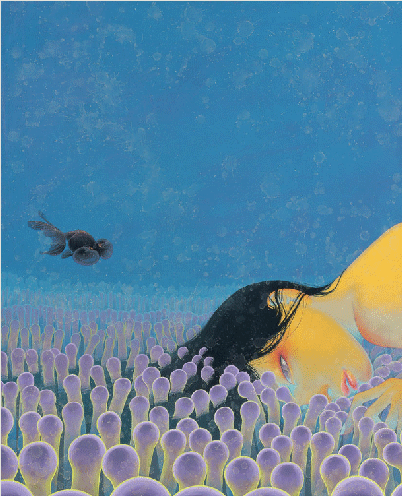
Alongside the escapism of nature and fantasy is Henri Matisse, whose rhythmic artwork immerses viewers in his harmonious world. Henri Matisse was not interested in politics, or conflict of any kind. Instead, he dreamed of “an art of equilibrium and purity, an art that neither unsettles nor confuses. I would like people who are weary, stressed and broken to find peace and tranquility as they look at my pictures.” Matisse paints a world devoid of struggle and emphasizes the peacefulness and fulfillment life has to offer. Exemplified by his iconic 1909 painting, La Danse, Matisse’s work sits in an atmosphere of freedom, highlighted by vivid colour. The artist paints people, not as a subject, but as whole, expressive characters, such that their peaceful mood leaks into the surrounding environment and the viewer themselves.
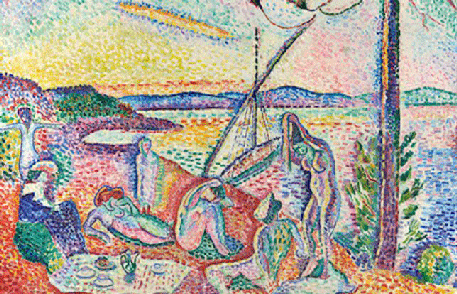
In a time defined by illness and isolation, the power of art to bring viewers to another world, perhaps one of fantasy or peace, presents the opportunity to detach from reality and indulge in escapism if only for a moment. However, when escapism isn’t enough, accepting one’s reality can too be done through the comforting embrace of art.
Giorgio de Chirico’s cityscapes of famous monuments, redefine said spaces by depicting them as desolate, lonely atmospheres as opposed to their populated, tourist-filled realities. In doing so, Chirico brings a quietness to some of the world’s busiest places, ridding them of their crowded confusion to make space for mental clarity. Similar to Chirico, Edward Hopper presents comforting loneliness within his art. Though Hopper’s depictions of isolation may not provide an escape from today’s social isolation, it does provide empathy and a sense of accompaniment.
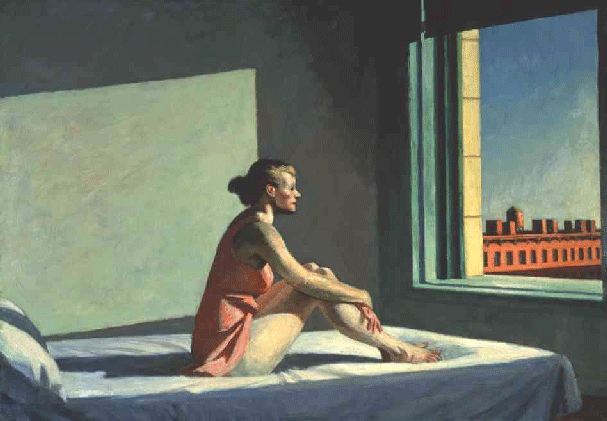
Until the world begins to turn once more and life becomes a little more certain, art—whether it provides an escape or a comfort—is a source of harmony in an ill-designed world.
